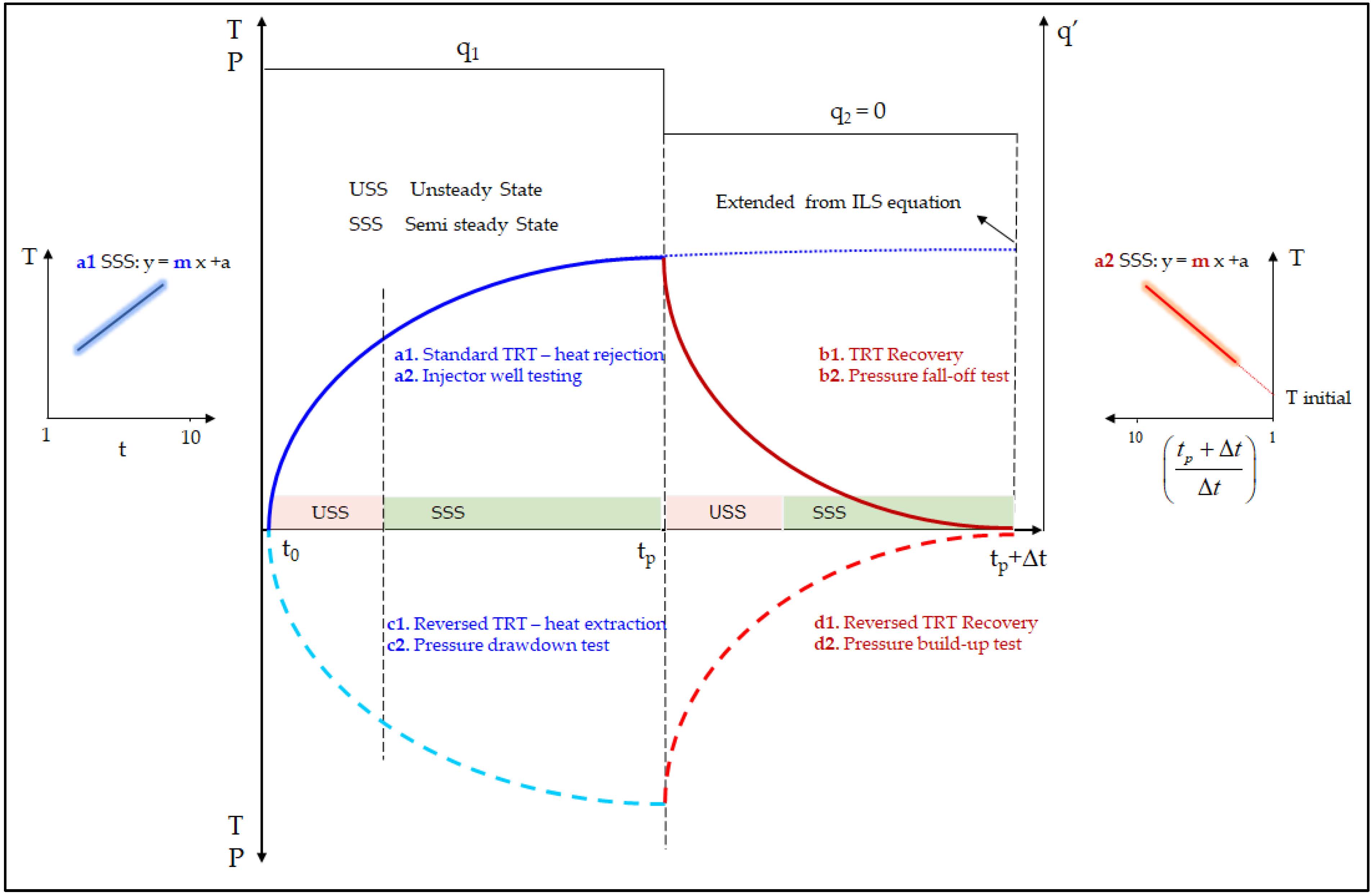Theory of the Thermal Response Testing (TRT) is a well-known part of sizing process of the geothermal exchange system. Multiple parameters influence accuracy of effective ground thermal conductivity measurement; like testing time, variable power, climate interferences, groundwater effect etc. To improve accuracy of the TRT we introduced procedure to additionally analyze falloff temperature decline after power test. Method is based on a premise of analogy between TRT and petroleum well testing, since origin of both procedures lies in diffusivity equation with solutions for heat conduction or pressure analysis during radial flow. Applying pressure build-up test interpretation technique to the borehole heat exchanger testing, greater accuracy could be achieved since ground conductivity could be obtained from this period. Analysis was conducted on coaxial exchanger with five different power steps, and with both direct and reverse flow regime. Each test was set with 96hr of a classical TRT, followed by 96hr of temperature decline, making it almost 2000 hours of cumulative borehole testing. Results showed that ground conductivity value could vary as much as 25% depending on test time, seasonal period and power fluctuations while thermal conductivity obtained from a falloff period gives more stable values with only 10% value variation.

